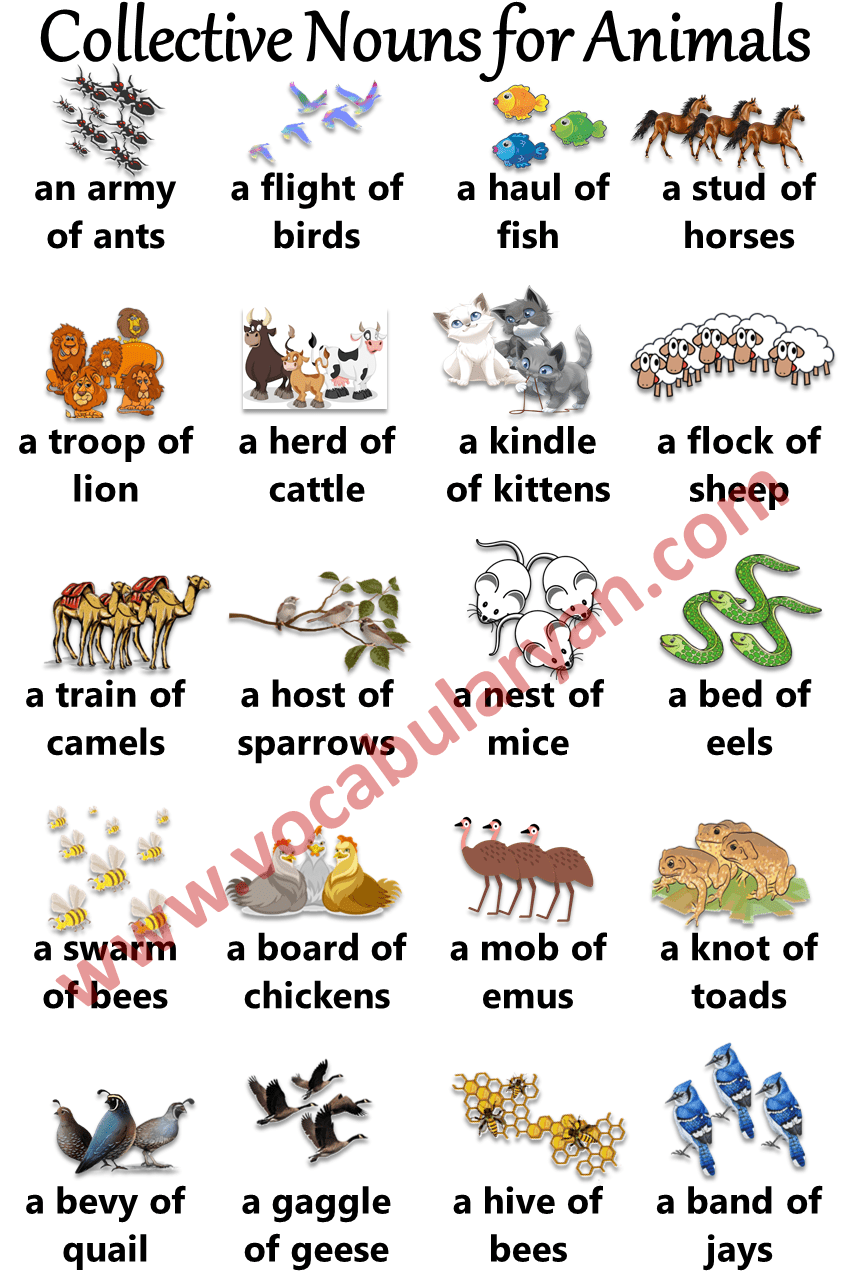Have you ever heard of a “murder of crows” or a “pride of lions”? These unique terms are known as collective nouns, which are used to describe groups of animals. Collective nouns are not only interesting but also add a touch of whimsy to the English language.
Animals have been given collective nouns that are often based on their behavior, appearance, or characteristics. These terms can vary depending on the species and are a fun way to describe groups of animals in a more creative and colorful manner.
Collective Nouns in Animals
One of the most well-known collective nouns in animals is a “herd.” This term is commonly used to describe a group of grazing animals such as cows, deer, or elephants. A “flock” is often used for birds, while a “pack” is used for wolves or dogs.
Other interesting collective nouns include a “parliament of owls,” a “gaggle of geese,” and a “pod of dolphins.” These terms not only help differentiate between groups of animals but also add a sense of poetry and imagery to the English language.
Some collective nouns are more obscure and lesser-known, such as a “clowder of cats,” a “murmuration of starlings,” or a “convocation of eagles.” These terms may not be as commonly used, but they showcase the creativity and diversity of collective nouns in the animal kingdom.
Collective nouns in animals are not only fun to learn but also serve a practical purpose in communication. They help us to paint a vivid picture of groups of animals and add a layer of richness to our descriptions. Next time you see a group of animals, try using their collective noun and see how it brings your words to life!
In conclusion, collective nouns in animals are a delightful aspect of the English language that adds charm and character to our descriptions of the animal kingdom. From a “clowder of cats” to a “parliament of owls,” these terms offer a unique insight into the world of animals and showcase the beauty of language.
